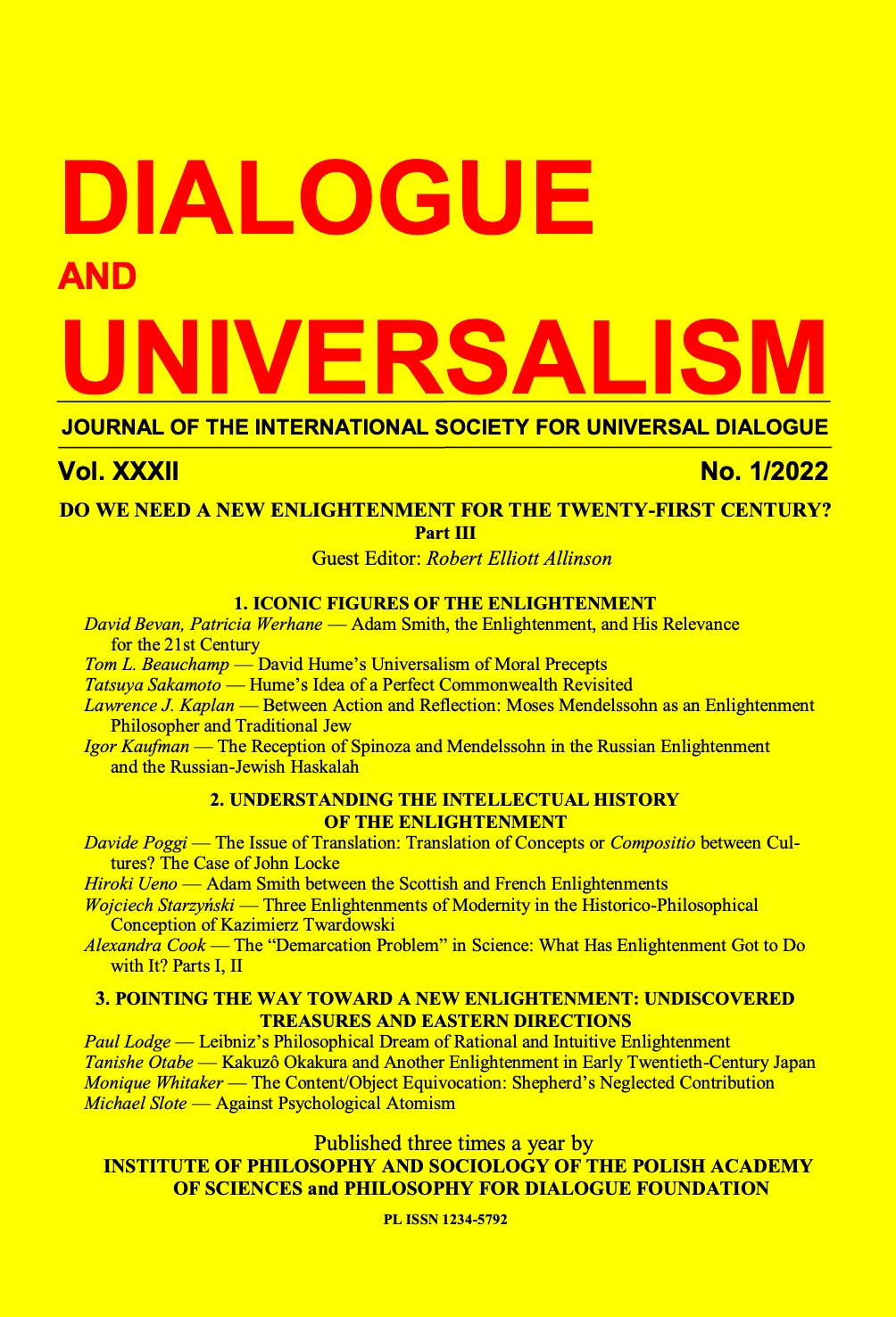THE TOPOS OF MU AND THE PREDICATIVE SELF
THE TOPOS OF MU AND THE PREDICATIVE SELF
Author(s): Baird CallicottSubject(s): Philosophy, History of Philosophy, Social Philosophy
Published by: Instytut Filozofii i Socjologii Polskiej Akademii Nauk i Fundacja Filozofia na Rzecz Dialogu
Keywords: the topos of mu; The Tao of Physics; monadic self; predicative or relational self; evolutionary-ecological worldview; comparative philosophy; mutual codependence; integrated systems paradigm
Summary/Abstract: Terminologically, the “topos of mu” and the “predicative self” originated in the Kyoto School and are traceable to the work of its founder NISHIDA Kitarō. The full phrase was coined by NAKAMURA Yūjirō. Conceptually, the topos of mu or place of nothingness is Nishida’s development of the Buddhist notion of anatta or no self and radiating out from that locus of emptiness is a self constituted by its predicates or the things to which it is connected by an existential copula. Deeply ingrained in Western languages, metaphysics, and religion is the subjective self, in both the linguistic and psychological senses of “subjective.” That Buddhism, as reworked by the Kyota School, or Daoism, or any other non-Western tradition of thought, will catch on in the West was a puerile fantasy of some members of the first generation of environmental philosophers. There is a good chance, however, that the Western worldview may evolve toward a similar conception of the self—as ecological, relational, or systems thinking becomes ever more ingrained. We in the West may come to understand that we are constituted by our social and environmental relationships, in which we are deeply embedded and on which we are utterly dependent, such that world care is the essence of self-help.
Journal: Dialogue and Universalism
- Issue Year: 2023
- Issue No: 2
- Page Range: 9-35
- Page Count: 27
- Language: English

